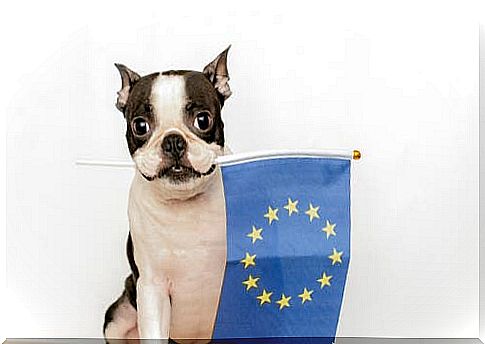The European Convention For The Protection Of Pet Animals

At the beginning of 2018, Spain finally decided to ratify the European Convention for the protection of companion animals, signed by Italy since 2010. In this way, Spain became the eighteenth European country to join the initiative, pledging to legally advance in the fight against the mistreatment and neglect of animals.
Despite the recent Spanish integration, the Convention has been in force for more than three decades. Specifically, its official approval dates back to 1987, almost ten years after the Universal Declaration of Animal Rights was read before UNESCO.
The publication of the Convention established a new framework for laws dedicated to the welfare of the continent’s animals.
While its reach does not allow it to legislate within national territories, it has acted as an engine of transformation. In doing so, it has been an impetus that has led to the legal changes that we can observe in Europe and to the expansion of public policies regarding pets. This is the case, for example, with the question of the legality of kidnappings.
What is the European Convention for the Protection of Pet Animals?
As the name suggests, it is a regulation that European countries can voluntarily adhere to. From the outset, its text highlights the main objective that led to its birth: to encourage concrete measures to improve the protection of companion animals living on the continent.
To be more precise, the preamble of the Convention provides that all people have a moral obligation to respect all living beings. In this way, the laws concerning animal welfare do not derive from fleeting political circumstances, but from the ethical responsibility of human beings.

We must always remember that, regardless of the social context, it is our duty to ensure that all species can enjoy the conditions necessary to develop their life cycle with dignity.
In this sense, the emotional, cognitive and historical bond that binds us to pets is distinguished, which highlights a positive impact on the quality of our life, both individually and socially. For this reason, in the first place, it is dedicated to listing what are the good practices that can encourage responsible trust among citizens.
Furthermore, the convention also promotes a series of public policies and concrete legal measures in the fight against abandonment and animal abuse. At the same time, it also responds to the aim of averting the resulting consequences, which pose a risk to public health, such as, for example, overpopulation on the streets.
Some contributions from the European Convention for the Protection of Pet Animals
One of its main contributions to animal welfare is the ban on cosmetic surgery. Historically, many breeds have been subjected to mutilation practices, such as ear and tail docking, to meet aesthetic standards, or to ensure better performance of certain activities, such as hunting.
With the ratification of the European Convention, the adhering countries undertake to prohibit such practices through the application of specific regulations. In Spain, for example, the decision involved a major step towards the unification of the regulations belonging to the various autonomous communities.
In practice, these rules generate several conflicts with the group of hunters, who claim to be damaged by the “wrong and extremist ideas” of animal rights activists.
With regard to sport hunting, the Convention also regulates the use of animals in recreational activities. According to his decisions, animals can only be used in activities that do not involve any kind of pain, humiliation, suffering or risk to their physical and cognitive integrity.

Governments as main actors in promoting animal welfare
Another contribution made by the Convention for the Advancement of Animal Protection is that it has explicitly given central governments the responsibility for promoting public policies that encourage responsible adoption and custody. For example, raise awareness of the importance of adopting effective contraceptive methods.
Furthermore, the adoption of concrete measures to combat the abandonment of animals, which leads to an acceleration in the increase of overpopulation on the streets, is reaffirmed as essential. Since its approval, it is possible to verify that all countries have approved stricter sanctions against the abandonment and mistreatment of animals.
In the legal field, then, the very definition of animal maltreatment has undergone changes and expansions. Nowadays, it embraces not only the physical integrity of the animal, but also its cognitive and emotional well-being. For this reason, in Europe any kind of abuse, violence or exploitation can be denounced as animal maltreatment.









